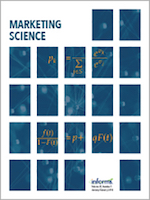Internet users seem to recognize native ads as advertisements and aren’t deceived into thinking that branded content is bona fide news, according to new research published by the Institute for Operations Research and the Management Sciences (INFORMS).
The practice of native advertising, or sponsored content that resembles editorial content, has skyrocketed in popularity in recent years, overtaking display as the most popular form of digital advertising. Digital market research company eMarketer earlier this year estimated that native ads will account for nearly two-thirds (62.7 percent) of all digital display ad spending in the U.S. in 2019, or about $44 billion.
 |
Native ads provide content that successfully captures consumer attention, and they’re also effective in bypassing technology such as ad blockers, which are used by consumers to avoid display ads. Moreover, offering these ads has proven lucrative among publishers in a digital publishing environment where competition for ads dollars remains stiff and platforms like Google and Facebook continue to take an increasingly larger share of the ad revenue pie.
But for years now, a debate has raged on surrounding the perceived deceptive nature of branded content made to looks like news. These concerns have drawn increased scrutiny from regulators—namely, the U.S. Federal Trade Commission—which in late 2015 issued guidelines regarding how marketers should properly disclose native ad content.
The INFORMS study, which sought to analyze how native ads are perceived by web users, relied on a field-experiment using international restaurant-search platform app Zomato. In an experiment that relied on 622 advertising restaurants and more than 265,000 web users over a six-week period, researchers placed randomized consumers into two different conditions: one in which advertisements were shown featuring a bold, yellow highlight making that ad easily distinguishable from non-sponsored content, and another in which advertisements were shown without any indication that they were sponsored by a paying advertiser.
Researchers discovered users’ observed behaviors under conditions in which there was a prominent disclosure that they were looking at content sponsored by a paying advertiser to be far closer to typical ad disclosure conditions than to conditions in which there was no disclosure at all.
According the study’s authors: "Comparing observed consumer behavior in the typical versus prominent disclosure format, we find that the outcome measures—calls and page visits for advertised restaurants—are statistically indistinguishable between these conditions. Therefore, in terms of the outcomes we observe, we detect no evidence of material deception under typical disclosure, based on the criteria above."
The study also confirmed the widely-held belief among advertisers that natively-formatted ads are beneficial, and remain a highly effective means of building brand credibility and reaching consumers. According to the study, visits to a native-advertising restaurant’s information page on the Zomato platform went up by an average of 41 percent. Moreover, calls to those restaurant went up by an average of 67 percent.
The study’s authors concluded that these findings present several main implications.
“First, users in our data are sophisticated consumers of advertising. Advertising does change their behavior. But this change is not likely because they are being tricked into clicking on native ads,” researchers wrote. “Second, the incentives of the platform, advertisers, and regulators are aligned: consumers value the clear disclosure regulators demand, and it benefits advertisers and improves monetization for the platform. Furthermore, currently used native formats in paid search do not seem to deceive consumers.”
“Further investigation shows that the incremental conversions due to advertising are not driven by users clicking on the native ads,” the study’s authors conclude. “Rather, the benefits from advertising are driven by users seeing the ads and later clicking on the advertiser’s “organic” listings. Thus, we find little support of native advertising tricking users into clicking and driving them to advertisers as typically feared; instead, users seem to view ads and deliberately evaluate the advertisers. Furthermore, mere exposure seems sufficient to produce most of the incremental effect of advertising.”
The study, titled “Sponsorship Disclosure and Consumer Deception: Experimental Evidence from Native Advertising in Mobile Search,” was authored by Navdeep S. Sahni and Hirkesh S. Nair of Stanford University. It will be published in the December edition of INFORMS’ peer-reviewed marketing journal, Marketing Science.


 Abandon traditional content plans focused on a linear buyer progression and instead embrace a consumer journey where no matter which direction they travel, they get what they need, stressed marketing pro Ashley Faus during O'Dwyer's webinar Apr. 2.
Abandon traditional content plans focused on a linear buyer progression and instead embrace a consumer journey where no matter which direction they travel, they get what they need, stressed marketing pro Ashley Faus during O'Dwyer's webinar Apr. 2. Freelance marketers and the companies that hire them are both satisfied with the current work arrangements they have and anticipate the volume of freelance opportunities to increase in the future, according to new data on the growing freelance marketing economy.
Freelance marketers and the companies that hire them are both satisfied with the current work arrangements they have and anticipate the volume of freelance opportunities to increase in the future, according to new data on the growing freelance marketing economy. Home Depot's new attempt to occupy two market positions at once will require careful positioning strategy and execution to make it work.
Home Depot's new attempt to occupy two market positions at once will require careful positioning strategy and execution to make it work. Verizon snags Peloton Interactive chief marketing officer Leslie Berland as its new CMO, effective Jan. 9. Berland succeeds Diego Scotti, who left Verizon earlier this year.
Verizon snags Peloton Interactive chief marketing officer Leslie Berland as its new CMO, effective Jan. 9. Berland succeeds Diego Scotti, who left Verizon earlier this year.  Norm de Greve, who has been CMO at CVS Health since 2015, is taking the top marketing job at General Motors, effective July 31.
Norm de Greve, who has been CMO at CVS Health since 2015, is taking the top marketing job at General Motors, effective July 31.


 Have a comment? Send it to
Have a comment? Send it to 
No comments have been submitted for this story yet.